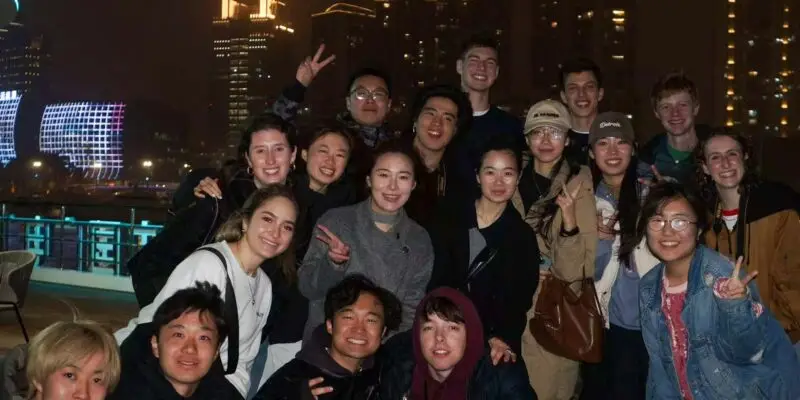
Hangzhou and Hebei
Written by Alice Chen (Wofford College), Student Correspondent for Middlebury in Beijing, Spring 2025 Reconnecting After Spring Break After everyone separated and traveled all around China for spring

Afternoon Tea at Maokong, Taipei
Written by Isaac Frank (University of North Carolina at Chapel Hill), Student Correspondent for CET Taiwan, Spring 2025 “Melita, this is NOT downhill.” 40 of us CET students

Beijing in the Spring and Traveling to Chengdu
Photos taken by Paul Douglass (Yale University), Student Correspondent for CET Beijing, Spring 2025 Beijing in the Spring Beijing, like many cities in China, is filled with green

Back-to-Back-to-Back Activities in Beijing
Written by Alice Chen (Wofford College), Student Correspondent for Middlebury in Beijing, Spring 2025 Temple of Heaven (天坛) Middlebury in Beijing students and roommates teamed up with CET

A Taste of YiLan
Written by Isaac Frank (University of North Carolina at Chapel Hill), Student Correspondent for CET Taiwan, Spring 2025 I didn’t realize how essential it was to spend a

A Trip from Beijing to Shanghai
Photos taken by Paul Douglass (Yale University), Student Correspondent for CET Beijing, Spring 2025 This past week CET Beijing took a trip to Shanghai. Shanghai is known as

A Growing Startup, Language Step Up, and Nice Setup
Written by Isaac Frank (University of North Carolina at Chapel Hill), Student Correspondent for CET Taiwan, Spring 2025 If only I’d known how much I’d love my internship,

Finding Time Outside of Classes at Middlebury in Beijing
Written by Alice Chen (Wofford College), Student Correspondent for Middlebury in Beijing, Spring 2025 Time Flies When You’re Having Fun Jam packed head to toe with activities and

Historical Landmarks of Beijing: Great Wall, Summer Palace, Forbidden City, and HuTongs
Written by Sadie Sadler (Middlebury College), Student at CET Beijing, Janterm 2025 and Middlebury in Beijing, Spring 2025 As a history major with a focus

Streets of Beijing: Beihai Park, Beijing 798 Art Zone, and more
Photos taken by Paul Douglass (Yale University), Student Correspondent for CET Beijing, Spring 2025 Walking along the streets of Beijing at night you are bound to pass